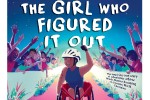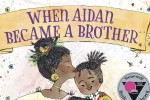2d
 “Disability Pride Month is a time to honor the history, achievements, and diverse experiences of people with disabilities. This curated collection features fiction and nonfiction titles for all ages that explore disability through the lens of pride, empowerment, and identity. Highlighting both visible and invisible disabilities, these stories reflect the richness and resilience of the disability community and the ongoing movement for inclusion and equal rights. Explore the display and celebrate the voices that challenge stigma, expand understanding, and inspire change.”
“Disability Pride Month is a time to honor the history, achievements, and diverse experiences of people with disabilities. This curated collection features fiction and nonfiction titles for all ages that explore disability through the lens of pride, empowerment, and identity. Highlighting both visible and invisible disabilities, these stories reflect the richness and resilience of the disability community and the ongoing movement for inclusion and equal rights. Explore the display and celebrate the voices that challenge stigma, expand understanding, and inspire change.”
Baltimore County Public Library, July 1
2d
 Heidi Blackburn, Chris Magee, and Trevor Watkins write: “George Mason University Libraries launched a yearlong Artificial Intelligence (AI) Community of Practice for library employees in fall 2024, focused on the use of specific AI tools for work and research best practices. We didn’t just explore what AI could do—we also asked what it should do, and how to use it responsibly in service to our patrons and profession. After participant feedback, the community was modified to focus on task-based themes. Prior experience with communities of practice made the creation of yet another community easier, but not without challenges.”
Heidi Blackburn, Chris Magee, and Trevor Watkins write: “George Mason University Libraries launched a yearlong Artificial Intelligence (AI) Community of Practice for library employees in fall 2024, focused on the use of specific AI tools for work and research best practices. We didn’t just explore what AI could do—we also asked what it should do, and how to use it responsibly in service to our patrons and profession. After participant feedback, the community was modified to focus on task-based themes. Prior experience with communities of practice made the creation of yet another community easier, but not without challenges.”
Choice 360: LibTech Insights, July 7
3d
 Kelly Jensen writes: “After the Supreme Court ruled on Mahmoud v. Taylor on June 27, there were so many bad and misinformed takes. Is this a case that is going to be used to justify a lot more censorship, quiet and loud, and create a chilling effect in public schools? Absolutely. But we don’t need to bow to this case. ‘I’m scared’ and ‘What does this mean?’ Those responses are ones that are far more productive in the fight. There’s room to have legitimate feelings and room to talk about the next steps.”
Kelly Jensen writes: “After the Supreme Court ruled on Mahmoud v. Taylor on June 27, there were so many bad and misinformed takes. Is this a case that is going to be used to justify a lot more censorship, quiet and loud, and create a chilling effect in public schools? Absolutely. But we don’t need to bow to this case. ‘I’m scared’ and ‘What does this mean?’ Those responses are ones that are far more productive in the fight. There’s room to have legitimate feelings and room to talk about the next steps.”
Well Sourced, July 5
3d
 Katie Burkholder writes: “After 15 years of working at the Pierce County Public Library in Blackshear, Georgia, where she advanced from part-time clerk to branch manager, Lavonnia Moore was unexpectedly and abruptly fired due to a display featuring a trans-inclusive children’s book. The patron-led display aligned with Georgia’s summer reading theme, ‘Color Our World.’ When a child at the library asked her to include the book When Aidan Became a Brother, she didn’t hesitate. Unbeknownst to Moore until her termination, this decision inspired an online hate campaign from the Alliance for Faith and Family.”
Katie Burkholder writes: “After 15 years of working at the Pierce County Public Library in Blackshear, Georgia, where she advanced from part-time clerk to branch manager, Lavonnia Moore was unexpectedly and abruptly fired due to a display featuring a trans-inclusive children’s book. The patron-led display aligned with Georgia’s summer reading theme, ‘Color Our World.’ When a child at the library asked her to include the book When Aidan Became a Brother, she didn’t hesitate. Unbeknownst to Moore until her termination, this decision inspired an online hate campaign from the Alliance for Faith and Family.”
Rough Draft Atlanta, July 5
3d
 Jennie Langberg writes: “When I started as a school librarian, I inherited a wonderful group of student volunteers: the Library Squad. The previous librarian sent me the names of her seven most trusted volunteers to help with shelving, bulletin boards, and a variety of library projects. Eager to offer volunteer opportunities to more students, I promoted Library Squad during English class orientations and was met with overwhelming interest. I learned a great deal about running a volunteer program from this experience and want to share the highs and lows with you.”
Jennie Langberg writes: “When I started as a school librarian, I inherited a wonderful group of student volunteers: the Library Squad. The previous librarian sent me the names of her seven most trusted volunteers to help with shelving, bulletin boards, and a variety of library projects. Eager to offer volunteer opportunities to more students, I promoted Library Squad during English class orientations and was met with overwhelming interest. I learned a great deal about running a volunteer program from this experience and want to share the highs and lows with you.”
The Library Lab, June 29
4d
 Katherine Gregory writes: “Mississippi State University, where I work as an assistant professor and director of the Mississippi Political Collections, is part of a national network of universities that hold and steward congressional papers. But support for this stewardship is in jeopardy. With the White House’s proposed elimination of independent granting agencies such as the National Endowment for the Humanities and the Institute of Museum and Library Services, it is unclear what money will be available for this work in the future.”
Katherine Gregory writes: “Mississippi State University, where I work as an assistant professor and director of the Mississippi Political Collections, is part of a national network of universities that hold and steward congressional papers. But support for this stewardship is in jeopardy. With the White House’s proposed elimination of independent granting agencies such as the National Endowment for the Humanities and the Institute of Museum and Library Services, it is unclear what money will be available for this work in the future.”
The Conversation, June 30
4d
 Steve Tetrault writes: “In February 2024, I shared about the reintroduction of a physical library space into my middle school after five years without one. This past school year was the first September since 2018 that my middle school had a physical library space. That space came a longway in a year! In our first year of operation, our new library space increased circulation by more than 50%. It is incredible what a difference having physical access to books makes.”
Steve Tetrault writes: “In February 2024, I shared about the reintroduction of a physical library space into my middle school after five years without one. This past school year was the first September since 2018 that my middle school had a physical library space. That space came a longway in a year! In our first year of operation, our new library space increased circulation by more than 50%. It is incredible what a difference having physical access to books makes.”
Knowledge Quest, July 8; Feb. 8, 2024